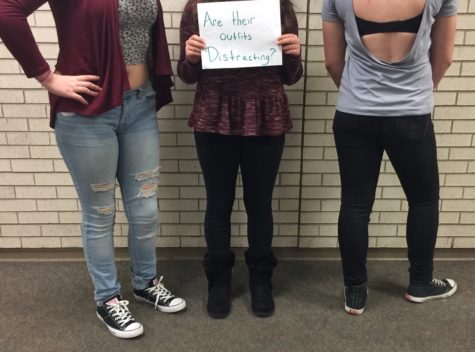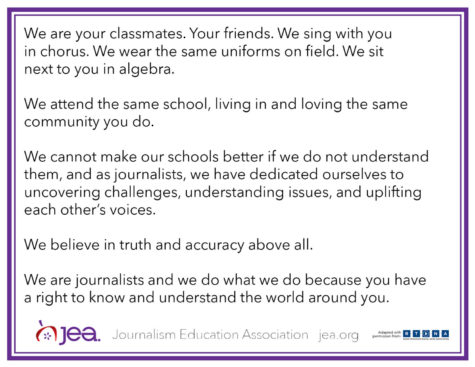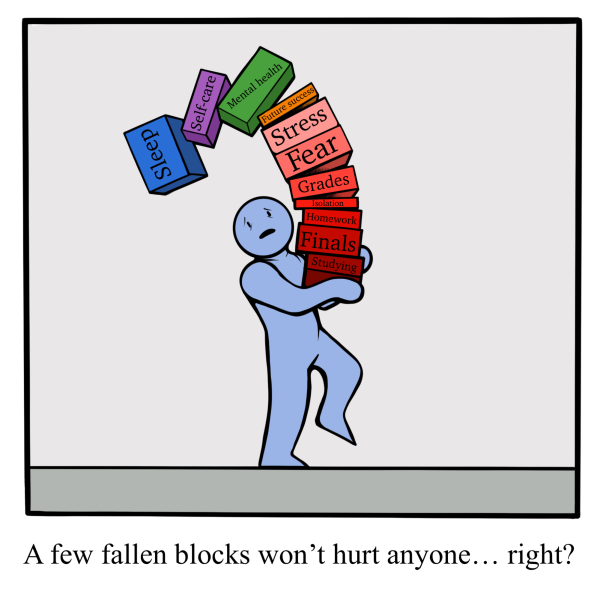Too Exposed?
February 21, 2017
The dress code is effective here at Broomfield High, as it is effective everywhere. It keeps students “focused on their learning”. Without restrictions on what people can wear at school, some people would be dressing inappropriately and could be distracting to their peers. Our dress code states no boobs, butts, bellies or bandanas are tolerated. This sounds pretty reasonable. However, at many schools, students have protested against their dress code, and many of them are girls. The dress code is heavily weighed on girls; targeting them more than males.
Currently, many schools have dress codes that heavily restrict girls and the way they dress, and do not focus much on boys. Boys will sometimes wear offensive attire, whether it be symbols, pictures or nudity of women. For example, a student at Monarch High School wore a baseball cap with the name “Brazzers” on his hat, which is a website that is not school appropriate, to say the least. The dress code did not bring attention to this student wearing this hat. Why should such profanity be allowed in what males wear at school, when a girl cannot express herself in a skirt that may not reach her fingertips when her arms are at her sides? Anything on a girl’s body has turned into something to be viewed as sexual and inappropriate. A shoulder, a leg, or a collarbone. All of these are considered a distraction from peers at school.
The dress code is not open-minded enough toward girls, as wearing a tank top with spaghetti straps or a shirt that exposes your collarbone seems to be a big issue for most schools. Girls shouldn’t be shamed for wearing what they want. They aren’t trying to “distract the boys from their learning”. A social experiment was done with a girl who wore a sweatshirt while taking a test alone in a room with two boys. The second time they took the test, the girl wore a tank top with spaghetti straps. After they completed the tests both times, the girl asked the two boys if they noticed anything different and if they were distracted. They were confused and asked her what was different. The two boys didn’t even notice the girl’s outfit change, showing that girls are not such a big distraction.
Makenna, 10, was dress coded on Jazzercise day during Spirit Week at Broomfield High School. She was wearing pink, non see-through leggings with a leotard over it and a tee-shirt to top it off. When told that she had to put a pair of shorts on over her outfit, she was confused and became self conscious. “I didn’t really understand why I had to cover up, because there wasn’t anything to cover up.” Although she was confronted about her outfit, she decided not to wear shorts, despite being advised to. “I didn’t put on shorts because I thought it was ridiculous and I just went onto sixth and seventh period with the outfit I had on. I saw other people wearing the same thing I wore, and they didn’t have shorts on,” she adds.
What girls choose to wear shouldn’t be, and isn’t, distracting to boys. The dress code is created and intended to protect students from harassment as well as from distractions from their studies and work. However, it has targeted and sexualized girls. Truthfully, some girls do in fact dress inappropriately, and the dress code is still a necessity to keep things from going out of hand. Although there are many pros and cons to having a dress code, there is still room for improvement and chances to establish equality (Niche).
Pros and Cons of School Dress Codes
| PROS | CONS |
| Can promote a sense of security | Can hinder creative expression in students |
| Less distraction for students so they can concentrate on their studies | Dress code suspensions can take focus away from education |
| Can instill discipline in students | Rules sometimes are not enforced uniformly |
| Can promote better behavior in students | Can be costly, depending on how strict the code is |
The dress code should be created to make sure everyone is dressed appropriately, amongst both males and females. Nobody can deny the fact that both males and females do dress inappropriately, but in hindsight to a student wearing his Brazzer’s hat versus a female student wearing a leotard with leggings, shows some inequality. We believe that the slightest adjustments to the dress code could make our schools more equal among their students.












Katie • Feb 28, 2017 at 8:23 pm
My issue is with the bandanas. I don’t understand why a girl who is wearing a bandana aeound her head should be dress coded, she is not representing a gang.
Brina • Feb 21, 2017 at 3:51 pm
The dress code can be crazy. I was wearing a muscle tank top with another tank top underneath so I wouldn’t be dress coded,but of course I got dress coded for the type of shirt I was wearing. I was told to cover up for something that was already covered…